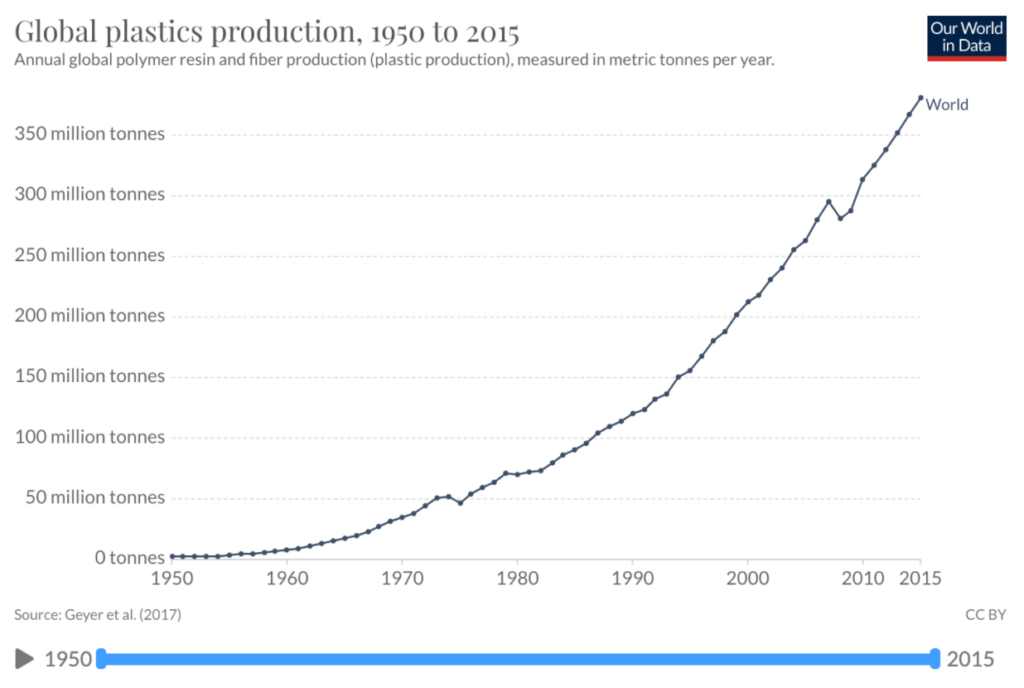Whether we realize it or not, we eat and breathe plastic every day. Plastic is present in almost everything we use. The keys I am pressing on my keyboard to write this sentence contain plastic. So does the electronic device you are using to read this. Let’s face it: we are surrounded by plastic from the moment we wake up to the moment we go to sleep. As our lives are becoming more and more dependent on plastic, we need to take a hard look at the great harm caused by this material and find ways to resolve this pressing issue. But how do we stop drowning in plastic when our lives depend on it?
Plastic as the “good guy”
Since its invention in 1907 by Leo Baekeland, plastic has made our lives easier. The fact that we can find plastic in, well… pretty much everything we use on a daily basis, just shows how useful and innovative this man-made material is. It is cost-efficient, durable, light-weight, and water-resistant. Some types of plastics are even heat-resistant.
Furthermore, plastics create jobs every day. Thousands of people are working in the plastics industry. In the US alone, over 700,000 people work in the plastic recycling business. Plastics can literally save our lives too, considering how often they are used in medical supplies and medical devices.
Plastic as the “bad guy”
As you may know, plastics are detrimental to our health and environment. Being a non-renewable source is one of the main characteristics of plastics. They also release toxic chemicals once burnt. People, organizations, and other “planet stakeholders” are realizing how harmful plastics are for all life on earth.
The production of plastic has also increased rapidly over the past couple of decades. According to Our World in Data, in 1950 “the world produced only 2 million tonnes per year. By 2015, annual production had increased nearly 200-fold, reaching 381 million tonnes. For context, this is roughly equivalent to the mass of two-thirds of the world population. Over the period from 1950 to 2015, cumulative production reached 7.8 billion tonnes of plastic — more than one tonne of plastic for every person alive today.”

ourworldindata.org
The fact that plastics take several hundreds of years to decompose, dramatically worsens the situation. Every single piece of plastic ever made still exists to this day. And might still exist for at least another 500 years. This is why a lot of states and organizations are looking for solutions to mitigate the negative effects of plastics on our planet.
Does recycling really help?
Recycling plastics is not as effective as we may think, considering only “9% of all plastic waste ever produced has been recycled” and 79% is currently “accumulated in landfills, dumps or the natural environment.” According to “History 101” a 2020 documentary web television series, between 8-12 million tons of plastic are dumped into the sea each year. While recycling may help the current situation, it is clear from the above that much more is required to alleviate the problem.
What about more eco-friendly materials such as glass and paper?
Struggling to break up with plastic, we are turning to more “eco-friendly” alternatives such as glass and paper. However, these existing alternatives could be as bad or even worse than plastic for the environment. Which is shocking, to say the least.
Let’s take plastic bags as an example, given that approximately 500 billion of them are used worldwide every year. Some studies have shown that paper bags are more harmful to the environment than plastic bags. Paper bags require more energy to transport, produce and recycle compared to their plastic alternatives. Nonetheless, those same studies show that we recycle paper bags at a higher rate compared to plastic bags.
“Paper bags, which have been adopted by some supermarkets for fresh produce, have a carbon footprint of up to four times that of a single-use plastic bag, and are much more difficult to re-use given how quickly paper tends to fall apart,” according to The Telegraph.
Glass bottles are also found to be more harmful to our planet than plastic bottles. According to a study by the Green Alliance, a glass bottle was found to require 360g per 500ml of water delivered, compared to just 10g for a plastic bottle.
What about different kinds of “plastics”?
Biodegradable and bio-plastics made from algae, corn starch, and other natural materials are becoming more of a reality. They are often considered a great alternative to traditional plastic. That being said, they are also controversial and come with their own drawbacks. Some of the biodegradable plastics produce methane gas when they decompose in landfills. Some do not decompose easily or do not decompose at all. Moreover, biodegradable plastics are not easy to recycle.
Is there anything we can do before drowning in plastic?
Completely replacing plastic seems like an impossible mission, considering how widely we use this material. Recycling as much as we can is one small step to address this issue. However, as previously mentioned, we can only recycle a very small percentage of plastics. Nevertheless, we can still hope scientists find other alternatives to plastics that are actually safer for the environment. Research on plastic-eating bacteria that can break down commonly used PET( Polyethylene Terephthalate) plastic is also a ray of hope.
What can we, as individuals, do in the meantime? Reducing waste and breaking our single-use mindset – this might be the most powerful way we can tackle this issue.
Header image: cottonbro via pexels.com


Thanks for sharing an informative article. The impact of plastic pollution on our environment is alarming and we need to take action now. The article presents some practical ways to reduce our plastic consumption and raise awareness about the issue. It’s time to stop drowning in plastic and make a positive change for our planet.